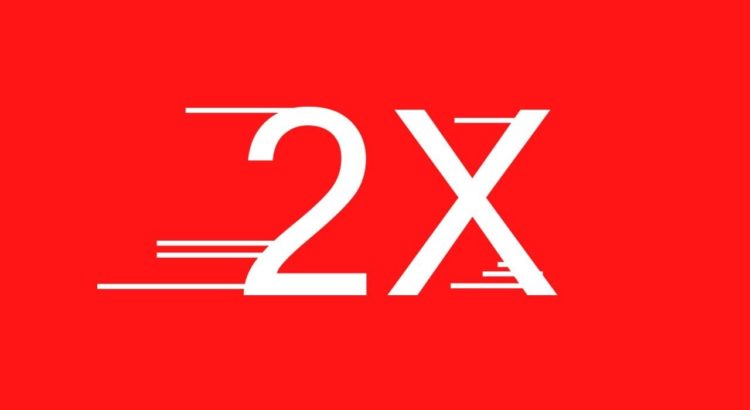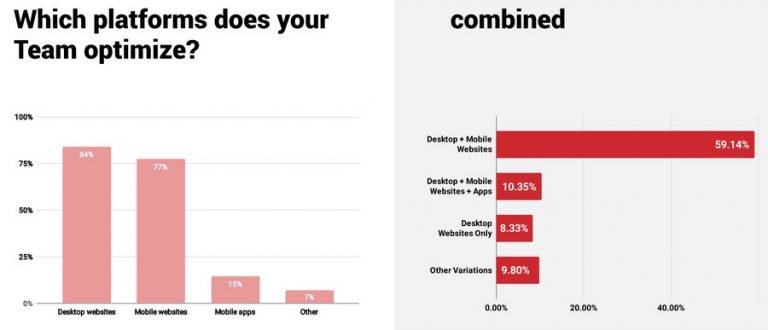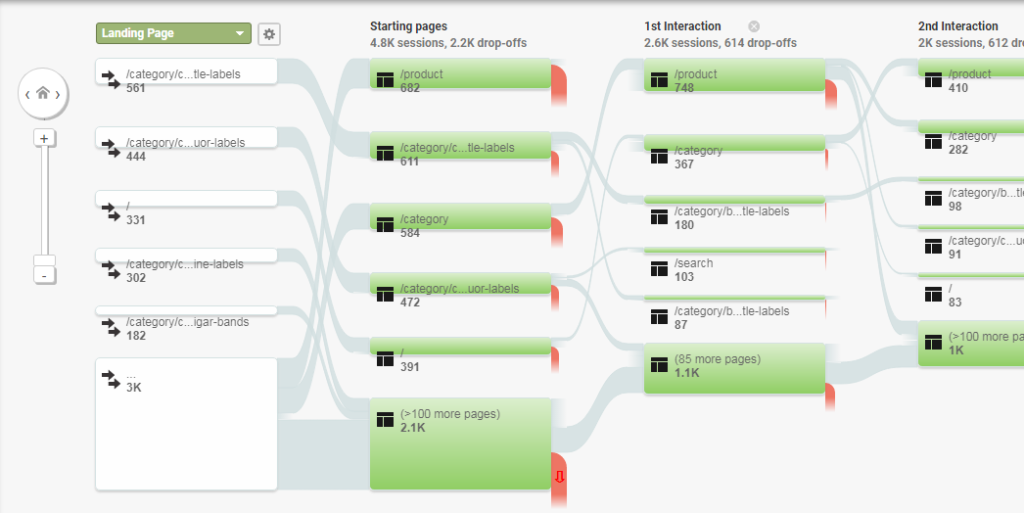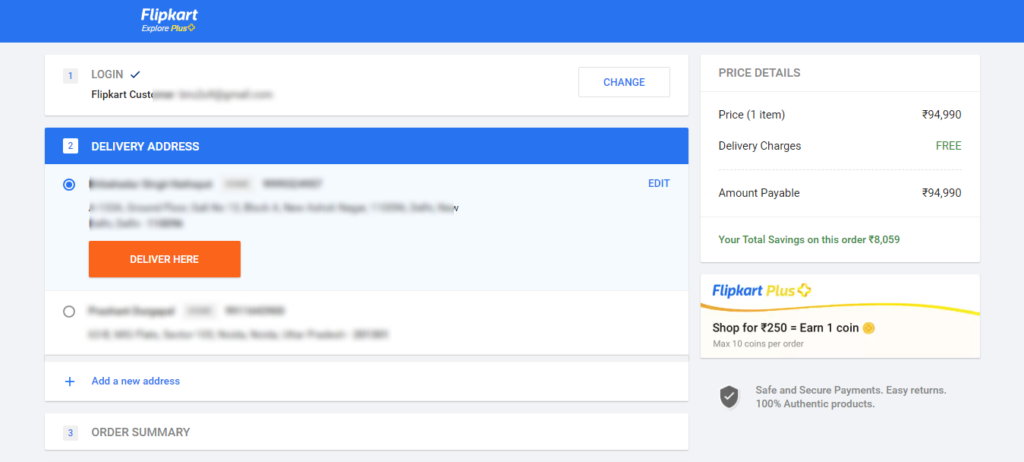Bottom line is that the bottom line matters. As hard as it may sound, let us face it that there is an elephant in the room that nobody in your digital marketing team wants to talk about. May the truth be said that traffic building though challenging amounts to nothing if the traffic is not converted? Take this statistical data. If you are able to increase your conversion rate from 1% to 2%, you are essentially going to end up doubling your sales revenue.
Ace digital marketing guru Neil Patel in one of his writings asserts that the statistics for the conversion rates of industry verticals accruing from Facebook advertisement campaigns point to an average conversion rate of 9.21%. Citing this as the reference he further asserts that in comparison to Facebook advertisement campaigns the conversion yield from websites has a measly average rate of 2.35%. What could be the enormity of the challenge of conversion rate optimization then?
Conversion is the single most important pain point and the ball stops rolling here. Needless to say then, that the conversion rate of your website is probably one of the most important indicators of the sales funnel of your brand and undoubtedly the most challenging one as well.
How Hard is to Climb the Mountain of CRO
Brands that rank first on Google SERPs too have a task at hand when it comes to CRO. As astounding it may sound the hard truth is that pages that rank first on Google search engine result pages have a click through rate of 34. 36%. Second there is mounting evidence on the fact that a higher number of people today are searching for the keywords “conversion rate optimization” than ever before. This is best testified by the data available from Google search trends on the subject matter of conversion rate optimization. Third, a whopping 68% of micro, small and medium enterprises by their own confession do not have a streamlined conversion rate optimization strategy. This data points towards among many other things to the lack of awareness among entrepreneurs and small business about the importance of CRO strategies and also points towards the non-availability of high quality human resources in the domain of conversion rate optimization.
Insights from the 2016 CRO Report and Its Takeaways
In the year 2016, CXL conducted a survey on conversion rate optimization that encompassed 722 respondents through a questionnaire covering 48 questions. Some of the major highlights of this survey and consequentially its report can enable us to better understand industry trends, the maturity of the conversion rate industry and its professionals along with the importance that business enterprises attach to filling up the positions in their CRO teams. Here are the insights.
Conversion rate optimization has just begun to take off and the domain as a whole is still very young and in its stages of infancy. While it is certainly exciting to work on a technology that is still new in the market, it surely indicates that there shall be some considerable flow of time before CRO professionals actually see a full bloom.
Given the fact there is still enough room for CRO professionals to penetrate the rank and file of online business enterprises, it is interesting to take note of the geographies that engage the highest number of CRO professionals and therefore are taken by the idea of adopting well defined CRO strategies to augment their sales funnel. Leading the way with one of the most lucrative salary slabs for CRO professionals across geographies is the United States of America with USD 87926, followed by the United Kingdom at USD 66,903 with Canada coming third in the list at USD 78370 and followed by the Netherlands at USD 60068.
In fact another important finding of the survey was the distribution of CRO professionals across digital marketing agencies, self employment opportunities and miscellaneous sectors that are yet to be formally defined. 39% of the respondents in the survey in 2016 said that they worked with digital marketing agencies, 58% of the respondents said that they worked with clients on in-house locations or remote work and another 3% of the respondents said that they worked on miscellaneous assignments and undefined sectors of the economy.
Evolution of the CRO Industry between 2016 and 2018
Moving from the year 2016 to the year 2018, the optics of the CRO industry seems to have undergone some evolution. The CRO Report for the year 2018 asserts that an overwhelming 82% of the CRO professionals are males and that the demographic trends show a reduction in female CRO professionals from 27.6% to 17.3%. The results also suggested that 51.9% of the respondents in the year 2018 worked on optimization of desktop and mobile websites, with the corresponding numbers for mobile apps being considerably less at 10.35%.
The proportion of CRO professionals working across digital marketing agencies and freelance assignments has remained fairly stable though between the years 2016 and 2018.
Gauging the Economic Potential of Conversion Rate Optimization
At the root of the conversion debate for your business is the necessity to understand the reason behind users abandoning your website at the end of an event with the “just browsing” argument. The Checkout Study conducted by Baymard Institute asserts that the global average cart abandonment rate for the last 9 years stands at 69.2%. One of the most important findings of the study was the excessively long checkout process. For instance, 26% of shoppers in the United States of America were reported to have abandoned an order in the last quarter only due to a “too long / complicated checkout process”.
The study further asserts that only if websites devote their entire attention and efforts to resolving challenges to checkout that alone could lead to a 35.6% increase in the average conversion rate. To give you an approximate assessment of the scope of economic value addition, we consider the combined ecommerce sales of the United States and European Union that amounts to $ 738 billion. This implies that another $ 260 billion in sales revenue can be added just by focusing on the checkout design issues of users.
Recommendations for Conversion Rate Optimization
Given the overwhelming evidences and insights available on the strategic importance of conversion rate optimization to your business, what are the next steps?
Analyse the Behaviour Flow of Users through Google analytics
First thing in your conversion rate optimization journey is to set up your Google analytics account and start analyzing the behaviour flow of users. The Behaviour Flow Report presented in the Google Analytics data demonstrates nodes, connections and events to better explain the flow of traffic. A node is a point through which the traffic flows. A connection is the path from one node to another and shows the volume of traffic along that path. An exit indicates the point at which the user left the flow.
The Behaviour Flow Report allows you to understand the movement of users from one page to another, the impact of content on the users and how the user ended up at your website in the first place, i.e. the landing page. The Behaviour Report in Google Analytics is the core information that you need to be following in order to understand where people go, how much time they spend on pages, bounce rate, percentage of people who leave after seeing just one page, number of pages per visit, and so on.
Optimize your Landing Pages’ Design
Second in the order of importance is having a great landing page. The landing page is from where a user gets to your website. Given that there is a plethora of things in the checklist for optimizing your landing page, it makes enormous good sense to narrow down our focus on the most important ones.
First, use a clean and clear landing page template design that is easy for the user to navigate, has precise content preferably in the form of bullets and a crystal clear CTA (call to action) button.
Second, make sure that the most important information about the call to action can be visible to the user without him having to scroll down. That is to say, keep it above the fold.
Third, remember the five seconds rule. Five seconds is all you get to attract the attention of the visitor to your website and convert him. If your landing page does not appeal to him immediately, chances are that he is going to exit.
Fourth given the primary importance of your landing page see to it that the CTA button has the combination of contrasting colours and draws the attention of the visitors “at a glance”.
Fifth, don’t forget to inject some desperation and urgency into your visitors with the offers that you create. Nudge them with a sense of urgency with an offer that is valid for a limited period of time. Make sure that your users realize the time value of money in your promotional schemes and offers and refrain from procrastinating. What can be made to wait a little in the world of marketing is made to wait indefinitely.
Run A/B Testing to Analyse the Performance of the Page
Third in the line of recommended techniques to optimize your conversion rate is the performance of your website. It is a statement of the obvious that the long term value of your website depends upon its performance. Therefore it makes sense to incorporate AB testing into your website development.
Develop two versions of the website for two user groups. Allow one user group to access the currently existing version of your website while allowing the other group of users to access the experimental version of the website. With the addition of a CMS subscription you can run AB testing for your website pages.
It is advised that while running the AB testing of your web pages you make changes to the experimental version only. In order to gather reliable data you may like to include the following variables in the AB testing such as copy of content, offers, images and form fields. Once you run the AB test, click the variations tab to get the results of your page performance.
In case if you want to test the call to action, make sure that you include the following: location of the CTA button, exact text used and the colour coding of the button and the surrounding space.
Improve the Checkout Process
Fourth in the hierarchy of steps that you need to undertake to improve your conversion rate and optimize it is the overhauling of the checkout process. 23% of users examined in a Sales Cycle survey said that they would decide to abandon their purchases if they had to create an account first. In order to avoid this problem, add a guest checkout option.
You may give users the option to enter their email addresses and head them straight towards checkout. Next, try to reduce the distractions in the checkout forms. Keep the navigation to a minimum so that your users are more focused on completing their form registration and consequently, the purchase as well. Again it is a great idea to lean on Google analytics to assess the challenges in the checkout process.
Keep tabs on the website loading speed. The loading speed is found to significantly impact conversion rates across devices. Conversion rates on mobile are found to be significantly lower at 1.55% than the web at 4.14%. Lastly don’t forget to seek and learn from customer feedback. Customer service interactions can enable you to learn a lot about the features and functionalities on your website that your users like and the ones that they don’t and thus solicit a removal or remedial action.
Remove your Conversion-Killing Sliding Carousel
Fifth we address something that you need to undo. Call it the error of commission in your journey towards conversion rate optimization but many entrepreneurs unknowingly kill their chances of a great conversion with carousels. Known across diverse geographies by different names like sliders, banners, scrolling banners and carousels, these are big time conversion killers, reports digital marketing guru James Dillon. Talking about the impact of carousels on user experience, he asserts categorically that these carousels do push the conversion rates downwards. He says and rightly that retailers overdo the act of information stuffing with the carousel.
On the contrary human beings are trained to treat carousels and scrolling banners like advertisements that are distracting and thus tend to ignore them. Further, human eyes get distracted by movement of the carousels that tend to scroll from left to right and thus divert the attention of the users away from the important information and the CTA button. Instead you can try removing the carousel and replace it with the CTA button instead to navigate the user into the next steps.
Provide a ‘Live Chat’ option
Sixth, in order to augment your conversion rate optimization, make sure that you make the user experience even more participatory and inclusive. Symbolic systems work on a standard thumb rule of interactive user experiences. Be it a website or a mobile application, people like the system or the technology to say hello to them, engage with them and make the experience even more conversational. One of the big reasons that websites tend to loss their visitors without having any purchases or transactions is the fact that users do not find any point of communication that can navigate them towards making guided choices.
In order to address this challenge add a live chat option to the desktop and mobile versions of the website or the mobile application. Also you can use a good and reliable website hosting services like HostPresto so that you can add live chat option easily on your website and improve your website speed. In fact with the advent of artificial intelligence and machine learning it is now possible for ecommerce websites to enable customers find the products that they are searching for in no time, suggest recommended products based on their history of purchases and make selling even more personalized.
Allow Shoppers to Pre-Order Out of Stock Items
Seventh in the list of our conversion rate optimization techniques is something that has not a great deal to do with technology but more with the availability of inventory. Allow your users to pre-order items that are out of stock. This applies to both the ecommerce website and the brick and mortar stores.
Make sure that the website allows your users to access data on the availability of inventory of merchandize at the brick and mortar retail stores and also on the online ecommerce stores. It has been found that users tend to abandon their purchases when they find their preferred products are out of stock and there is no specific attempt to convince them of the assured availability of their merchandise at a future date.
Give them the option to pre-order products that may have run out of inventory and even see when the nearest brick and mortar stores are likely to fulfil their orders. In combination with the web and the brick and mortar store, this can greatly increase your conversion rates and augment sales.
Final Thoughts on Conversion Rate Optimization
In the final diagnosis, let us remember that your website, mobile app or that Facebook advertisement campaign has got to yield conversions. As you proceed towards the next steps in your sales funnel remember that you can get your email marketing overhauled, get a supremely beautiful and user friendly website designed and developed and run a fabulous advertisement campaign to run on your social media assets. Yet at the end of the day, your business be it pure ecommerce or a combination of online and offline is going to be assessed purely on the basis of the users that you convert. Of all things technology, do not forget to invest in the right resources, expertise, content and design with an eye on the outcome, i.e . conversion rate.





